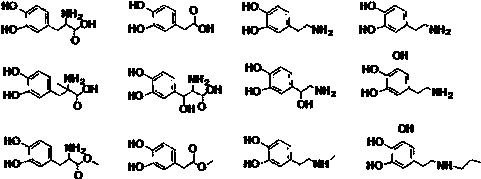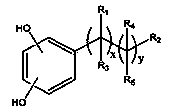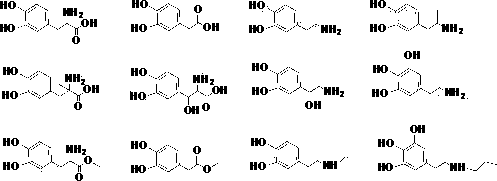Preparation method and application of anti-pollution hydrophilic separating membrane
A separation membrane and anti-pollution technology, applied in the field of separation membranes, can solve the problems of shedding, easy washing of the hydrophilic phase, etc., and achieve the effects of cost saving, easy industrialization, and mild conditions
- Summary
- Abstract
- Description
- Claims
- Application Information
AI Technical Summary
Problems solved by technology
Method used
Image
Examples
Embodiment 1-4
[0033] The preparation method of the hydrophilic separation membrane of the present embodiment is carried out according to the following steps:
[0034] (1) Add 15 parts of polysulfone by weight, 0.1 part of polyethylene glycol (molecular weight 10,000g / mol), 0.05 parts of dopamine and 85 parts of N,N-dimethylformamide into the dissolution tank , at different temperatures (25°C, 45°C, 65°C, 85°C), stirring and dissolving for 2 hours, standing for defoaming for 4 hours, and making a casting solution;
[0035] (2) Adjust the pH of the water coagulation bath to 8.5 by adding phosphate buffer;
[0036] (3) cast the casting solution on a flat plate to form a liquid film, and then soak it in a coagulation bath for 10 minutes to obtain a hydrophilic polymer flat film;
[0037] (4) Soak the separation membrane prepared in step (3) in 15% Tween-20 aqueous solution for 50 minutes, and then dry it to assemble the membrane module.
Embodiment 5-9
[0039] The preparation method of the hydrophilic separation membrane of the present embodiment is carried out according to the following steps:
[0040] (1) 20 parts, 30 parts, 40 parts, 50 parts and 60 parts of polyvinylidene fluoride material, 3 parts of polyvinylidene fluoride-polyvinyl alcohol copolymer, 1 part of 3,4-di Hydroxybenzaldehyde and 80 parts by weight of DMF were added into a dissolving tank, stirred and dissolved for 12 hours at 100° C., left to stand for defoaming for 8 hours, and made into a casting solution;
[0041] (2) Add 5 parts of potassium persulfate to the water coagulation bath containing 3% N,N-dimethylformamide and N-methylpyrrolidone;
[0042] (3) The casting solution is spun on a hollow fiber membrane spinning machine, and then soaked in a coagulation bath for 12 hours to obtain a hollow fiber membrane;
[0043] (4) The separation membrane prepared in step (3) was soaked in 40% glycerol aqueous solution for 3 hours, and then dried to assemble t...
Embodiment 10-13
[0045] The preparation method of the hydrophilic polymer membrane of the present embodiment is carried out in the following steps:
[0046] (1) Divide the weight into 20 parts of polyacrylonitrile, 1 part of different hydrophilic materials (polyethylene glycol, polymethylmethacrylate, polyvinylpyrrolidone, polyvinyl alcohol), 1 part of 3,4-dihydroxy Phenylacetic acid and 80 parts of DMAC were added into the dissolution tank, stirred and dissolved for 48 hours at 30°C, and left to stand for defoaming for 24 hours to make a casting solution;
[0047] (2) Add 2 parts of phenol to the pure water coagulation bath;
[0048] (3) The casting liquid is spun on a hollow fiber membrane spinning machine, and then soaked in a coagulation bath for 48 hours to obtain a hollow fiber membrane;
[0049] (4) Soak the separation membrane prepared in step (3) in 15% Tween-80 aqueous solution for 24 hours, and then dry it to assemble the membrane module.
PUM
| Property | Measurement | Unit |
|---|---|---|
| Molecular weight | aaaaa | aaaaa |
Abstract
Description
Claims
Application Information
 Login to View More
Login to View More - R&D
- Intellectual Property
- Life Sciences
- Materials
- Tech Scout
- Unparalleled Data Quality
- Higher Quality Content
- 60% Fewer Hallucinations
Browse by: Latest US Patents, China's latest patents, Technical Efficacy Thesaurus, Application Domain, Technology Topic, Popular Technical Reports.
© 2025 PatSnap. All rights reserved.Legal|Privacy policy|Modern Slavery Act Transparency Statement|Sitemap|About US| Contact US: help@patsnap.com



